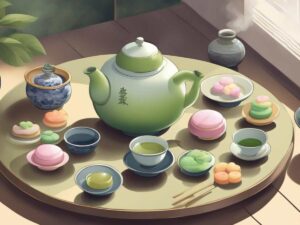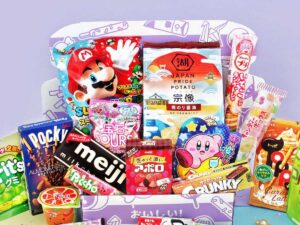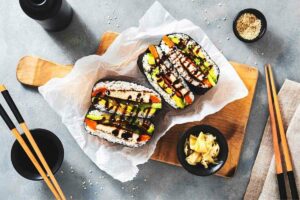These two popular Japanese noodle dishes are more different than you’d think.
The noodle cousins share some familiar traits, but in other ways, they’re actually very different.
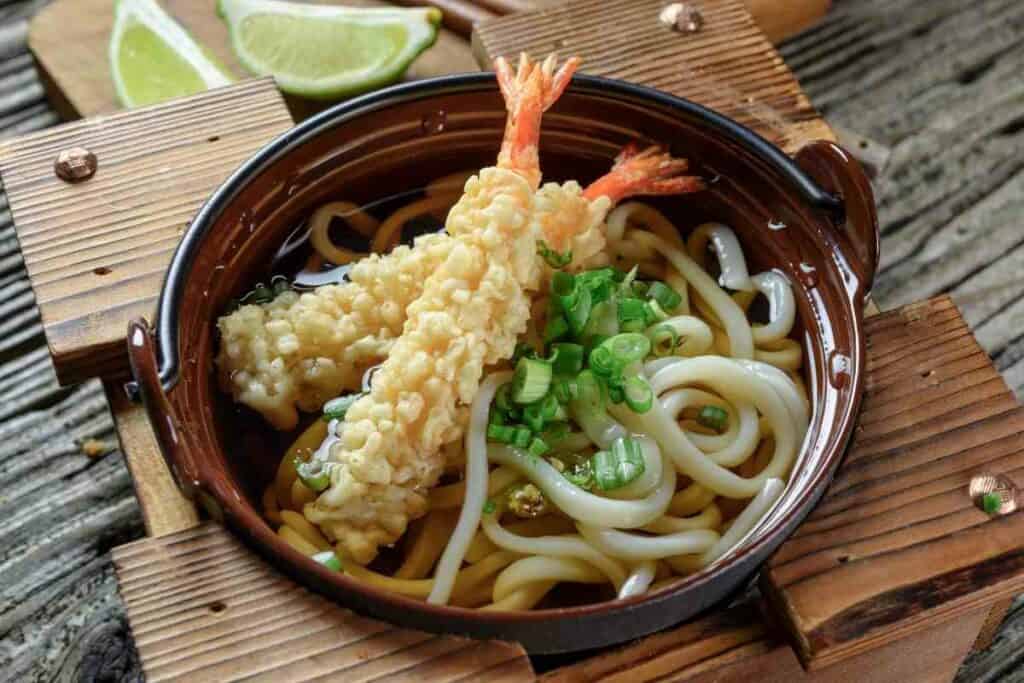
Let’s have a look at udon vs ramen and what the similarities and differences are.
Table of Contents
Udon vs Ramen
Firstly, it’s necessary to point out that both dishes are noodles that are served in a soup or broth and are made from wheat flour.
They’re a very popular element of Japanese cuisine. However, this is where their similarities end.
Udon
Udon noodles are made from wheat flour, salt and water. They are much thicker than Ramen noodles and are served in a dashi-based broth.
Udon noodles can be rounded or flat and typically measure between two and four millimeters wide. Udon are white in color due to the flour from which they’re made.
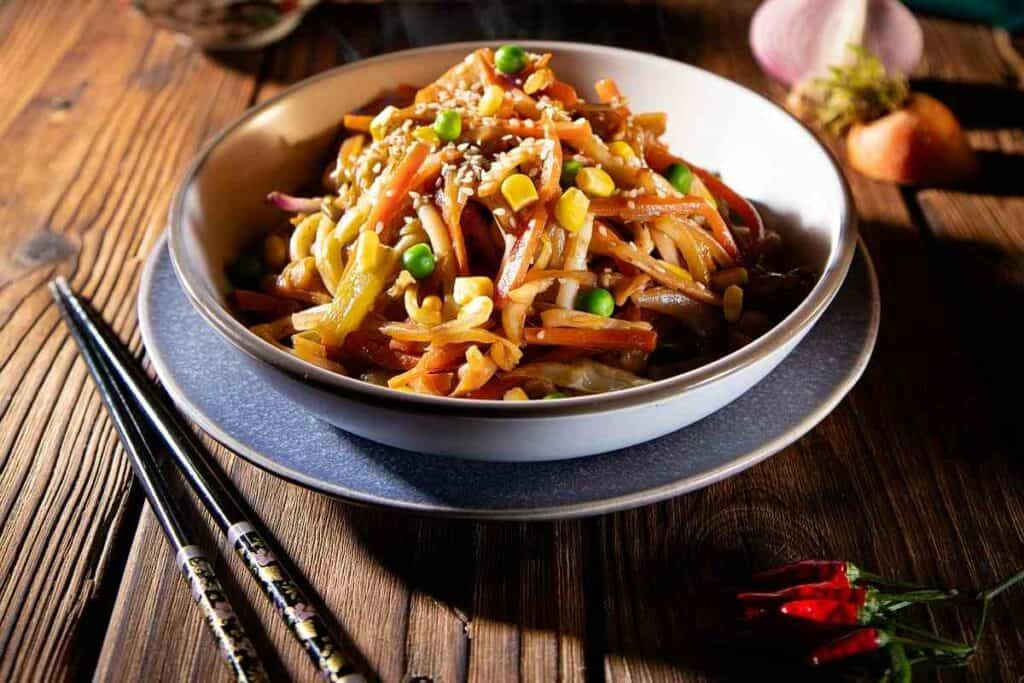
As far as texture goes, udon are chewy, bouncy, and somewhat springy.
This is because of the techniques involved in making them. Udon noodles should be cooled before they are served. In restaurants, chefs put the noodles in cold water to cool them.
They then add hot broth on top of the cooled udon noodles.
They do this because it stops the udon from becoming overly soggy and over-cooked. If this step is not taken, the noodles would lose their bounciness and springiness.
The broth for udon noodles is called kakejiru, which is subtle and light in taste. The noodles are often served with an egg yolk, and green onions and topped with something such as a kamaboko fish cake.
Other popular toppings include kamaboko, which is sliced beef, aburaage (a tofu pouch that has been deep-fried) or tempura.
Ramen
Ramen noodles are also made from wheat flour but are yellow in color thanks to the addition of kansui.
Kansui is an alkaline solution that reacts with the milled flour and creates a tiny hint of ammonia, giving the ramen their characteristic yellow tinge and chewy texture as well as creating their distinct flavor.
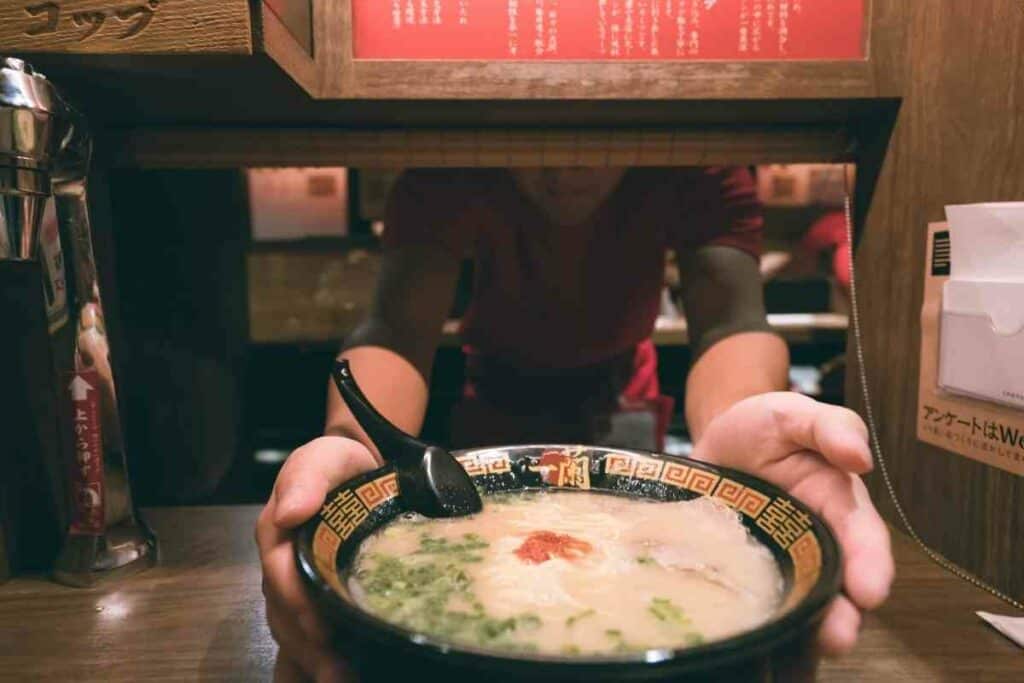
Ramen noodles also contain egg, meaning that, unfortunately for some, they are not suitable for vegan diets.
These noodles tend to be thin but can be curly or straight.
Ramen are popular around the world thanks to instant ramen noodles hitting the shelves back in 1958.
With these instant noodles, you just add water and have perfect ramen every time.
When cooking ramen or when it is served in a restaurant, it comes in a thicker, rich broth.
There are a few different varieties of ramen broths, but all are flavorsome with bolder tastes.
Udon Dishes
Let’s take a look at a few popular udon dishes.
Kake Udon
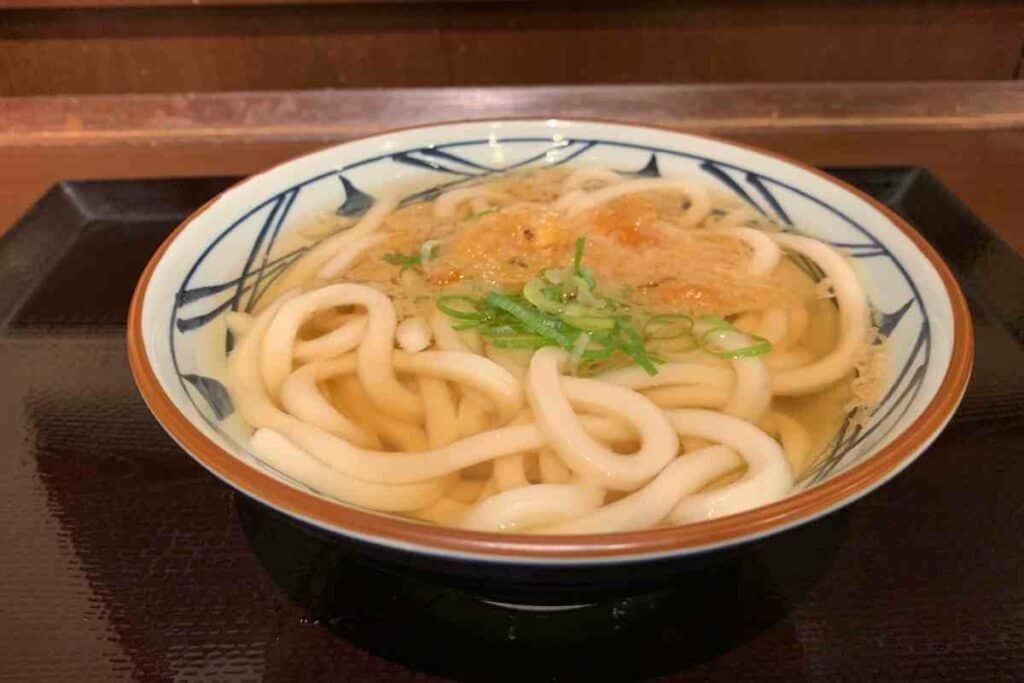
The most traditional of the udon dishes, it is made with udon floating in the broth.
The kakejiru broth is made from dashi, mirin and soy sauce.
Nabeyaki Udon
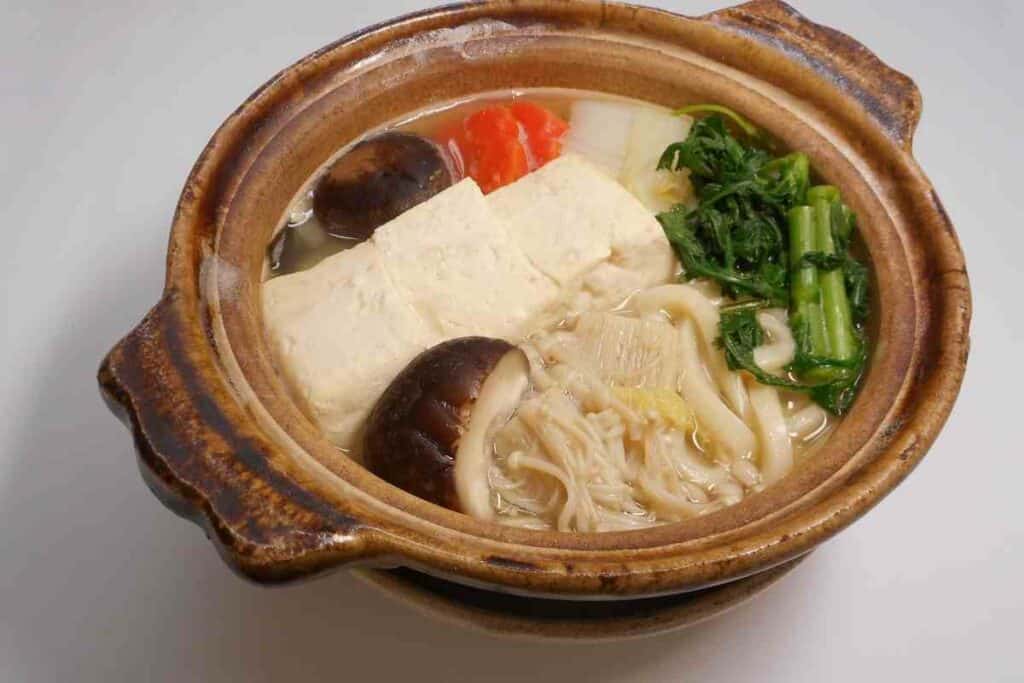
Udon noodles, meat and vegetables feature in this dish with an egg added at the end of the cooking.
This is a classic comfort food in winter and is usually made in small, individual pots.
Yaki Udon
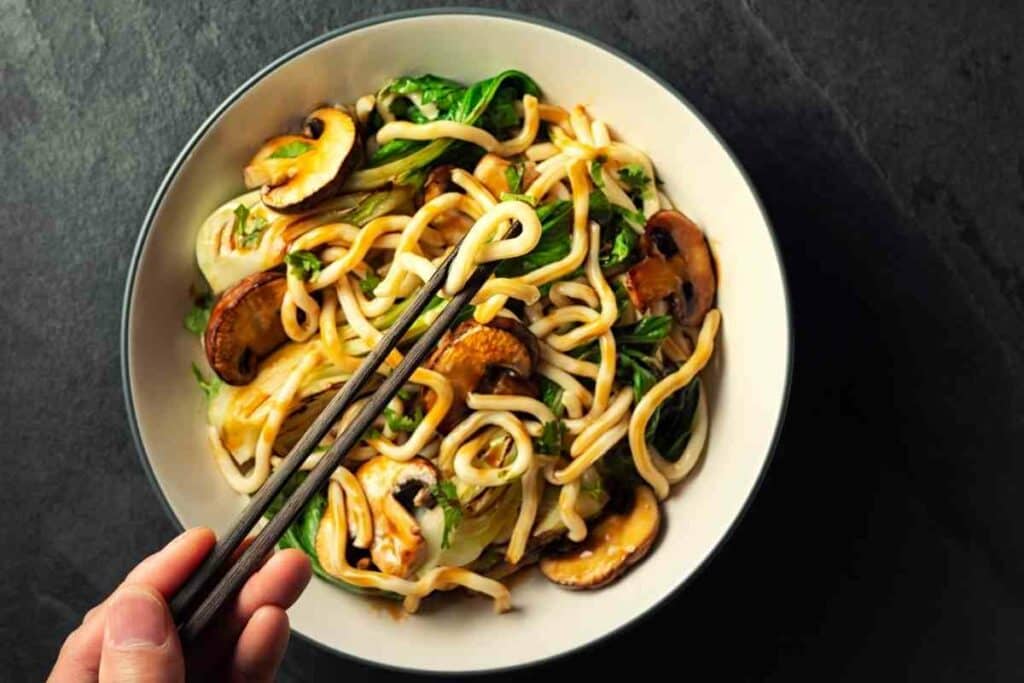
These udon noodles are stir-fried with pork (or other meat/protein) and vegetables.
A staple in Japanese restaurants that’s also easy to make at home.
Kitsune Udon
This is a vegetarian udon dish made with fried tofu and a dashi broth.
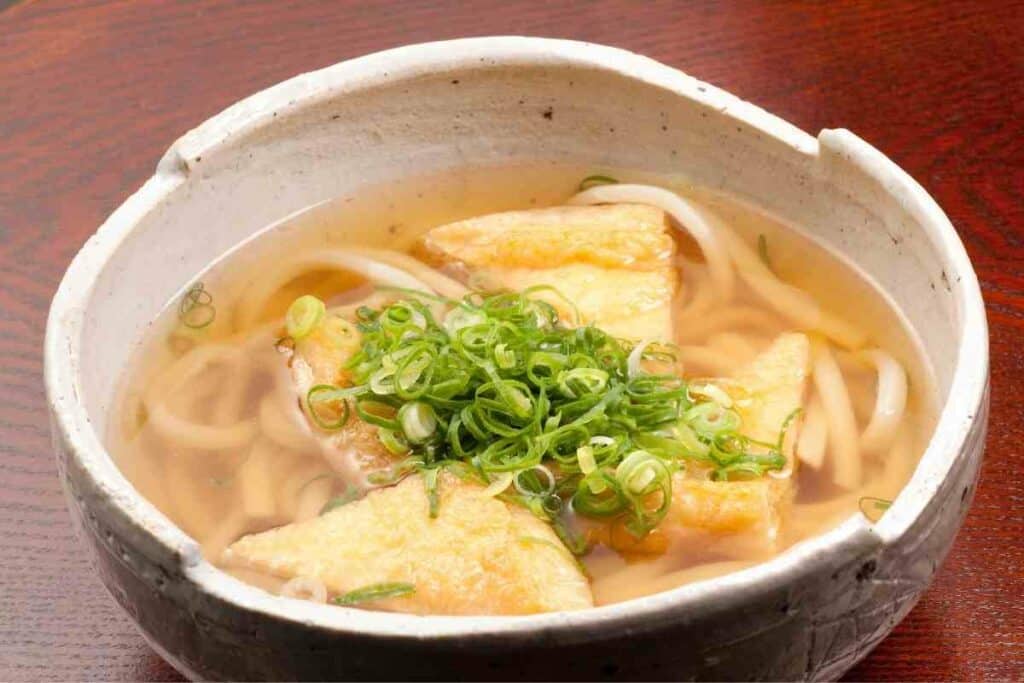
Kitsune means “fox” in Japanese, and the dish takes this name as it is a magical creature that features in folktales whose preferred food is seasoned fried tofu, inari age.
Ramen Dishes
There are four popular ramen dishes:
- Shoyu ramen
- Miso ramen
- Tonkotsu ramen
- Shio ramen
Shoyu Ramen
This kind of ramen is made with broth, ramen noodles, sauce, flavored oil and toppings.
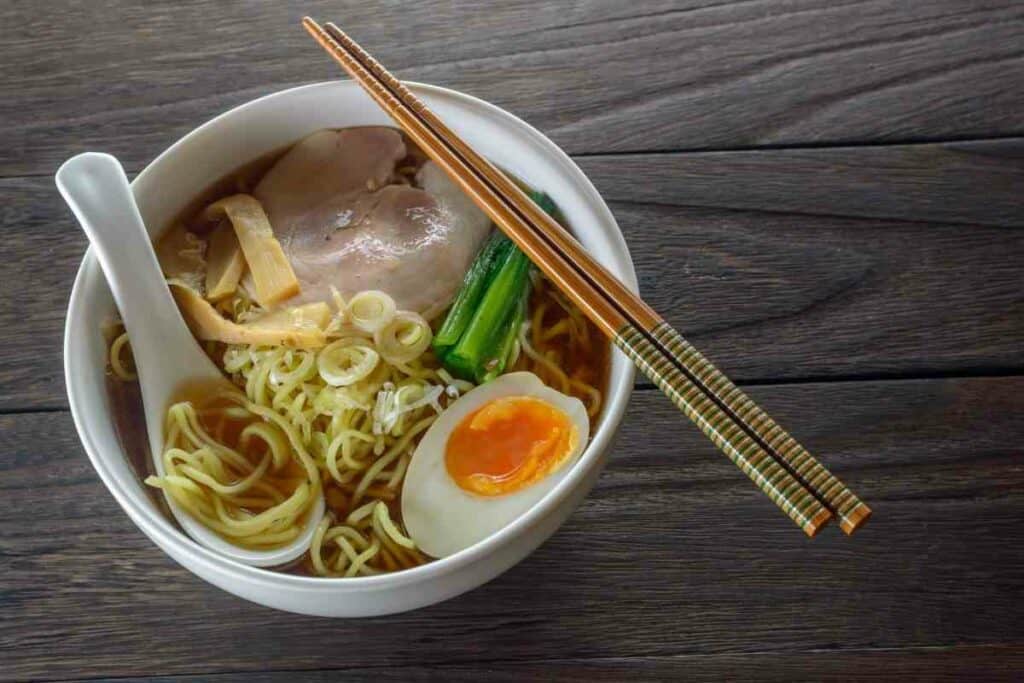
The sauce is largely soy sauce with a few added ingredients. Shoyu means ‘soy sauce’ in Japanese. This is a light broth that is familiar and nostalgic for many Japanese people.
The broth is usually made from pork or chicken broth sometimes with a soup stock of niboshi (dried sardines) or konbu (kelp).
Toppings include:
- chashu (slices of braised pork)
- menma (bamboo shoots)
- nori (dried seaweed)
- and green onion
Miso Ramen
This ramen has a thick, rich miso flavor as you may have guessed.
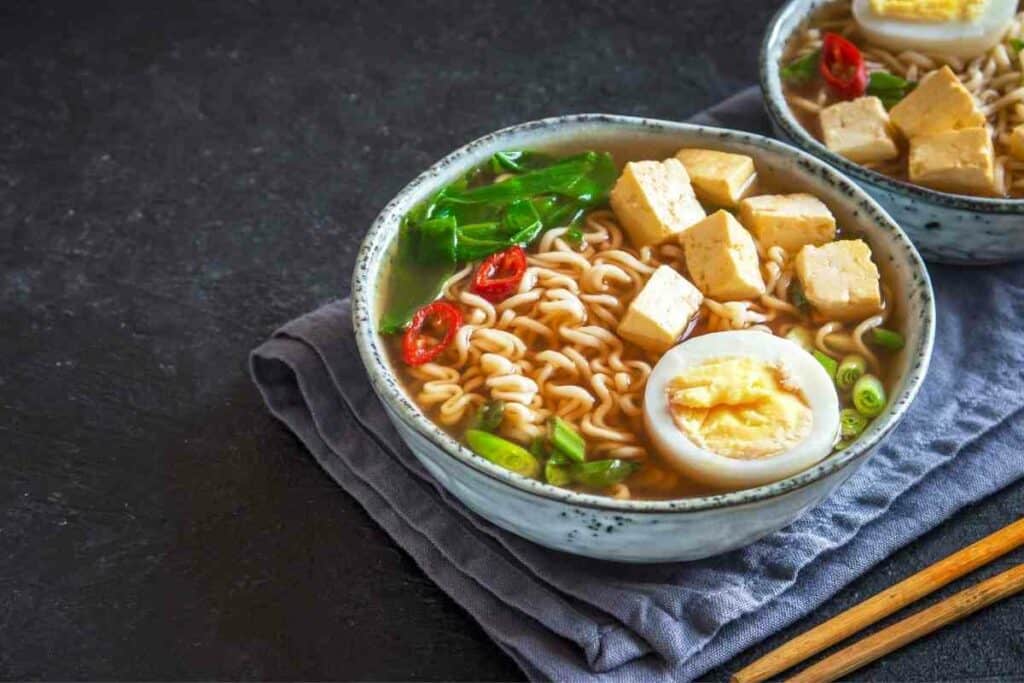
The broth is made from pork bones and vegetables.
Thicker, wavy noodles are used in this dish, and it has toppings such as rice and koji (an organism used in fermenting soybeans) and fermented soybeans.
Tonkotsu Ramen
Tonkotsu is Japanese for pork bone.
Chefs boil the pork bones on a high heat for hours and therefore parts of the bone are melted into the broth.
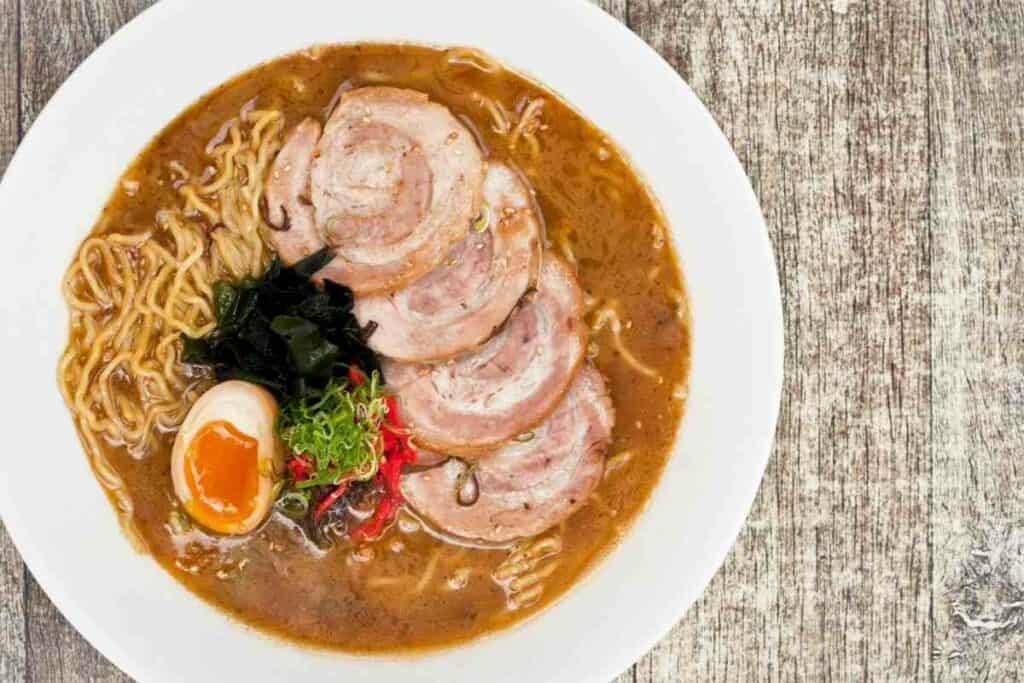
This makes it cloudy, thick, and very rich in taste.
Usually, thinner ramen noodles are used, and simple toppings are added such as:
- green onion
- garlic
- ginger
- karashi takana
- and chashu sesame
Shio Ramen
Shio is the Japanese word for salt. This ramen has a distinctive clear soup that is made from pork or chicken bones.
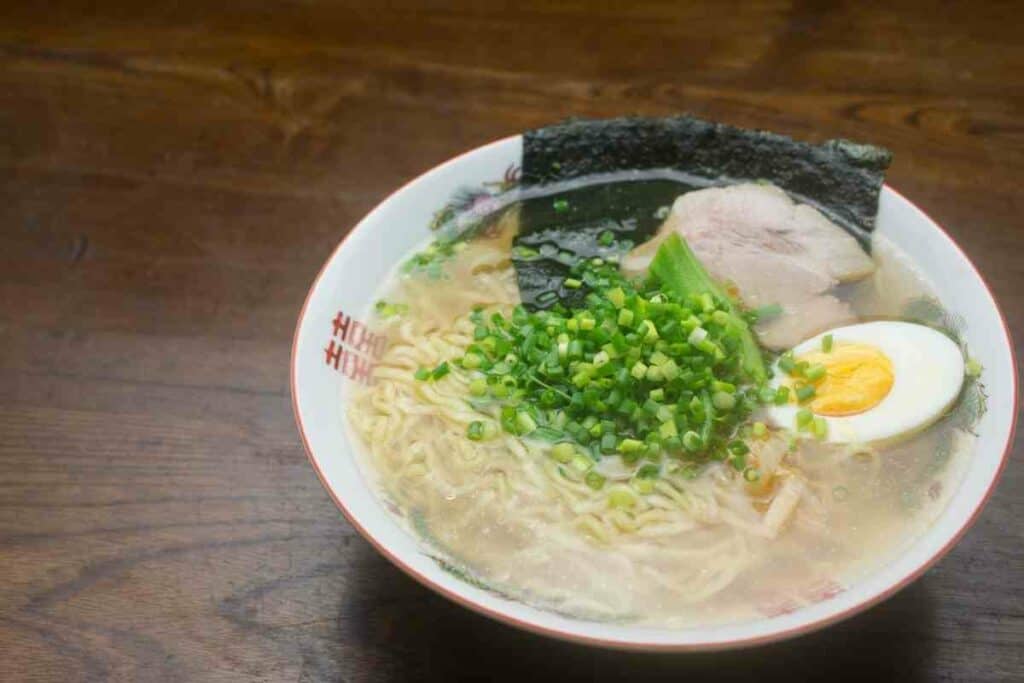
So that the broth stays clear, the bones must be cooked gently rather than on a high heat.
Chefs tend to use noodles that are of medium thickness with this ramen dish. Toppings are often menma, green onions, and chashu.
Final Thoughts on Udon vs Ramen – What is the difference?
Let’s summarize the differences!
| Udon | Ramen |
|---|---|
| Lighter, simpler broth | Richer, thicker broth |
| Noodles made from flour, salt and water | Noodles made from flour and kansui |
| White in color | Yellow in color |
| Thicker in size | Thinner in size |
| Straight in shape | Can be straight or wavy |
| Vegan | Not usually vegan-friendly due to egg |
| Simple toppings | Heavier toppings |
As you can see, whilst both types of noodles have much in common, they are surprisingly different when you look further!
There are differences within the type of broths in each, the ingredients of the noodles, their color, texture and shape, and their toppings!
The next question should therefore be: Udon vs Ramen – which do you prefer?
You Might Also Read
- Japanese Traditional Sweets (Wagashi): A Guide to Their Origins and Varieties
- A Taste of Japan in Every Bite – Japanese Candy & Snack Box Review
- Bubble Tea vs Boba Compared: What’s the Difference?
- Best Izakaya Foods for a Relaxed Night Out (My Top 10 Picks)
- Edo Kiriko Whiskey Glasses (Japanese Heritage in Every Pour)
- Japanese Viral Foods on Social Media (Discover the Top 10)

